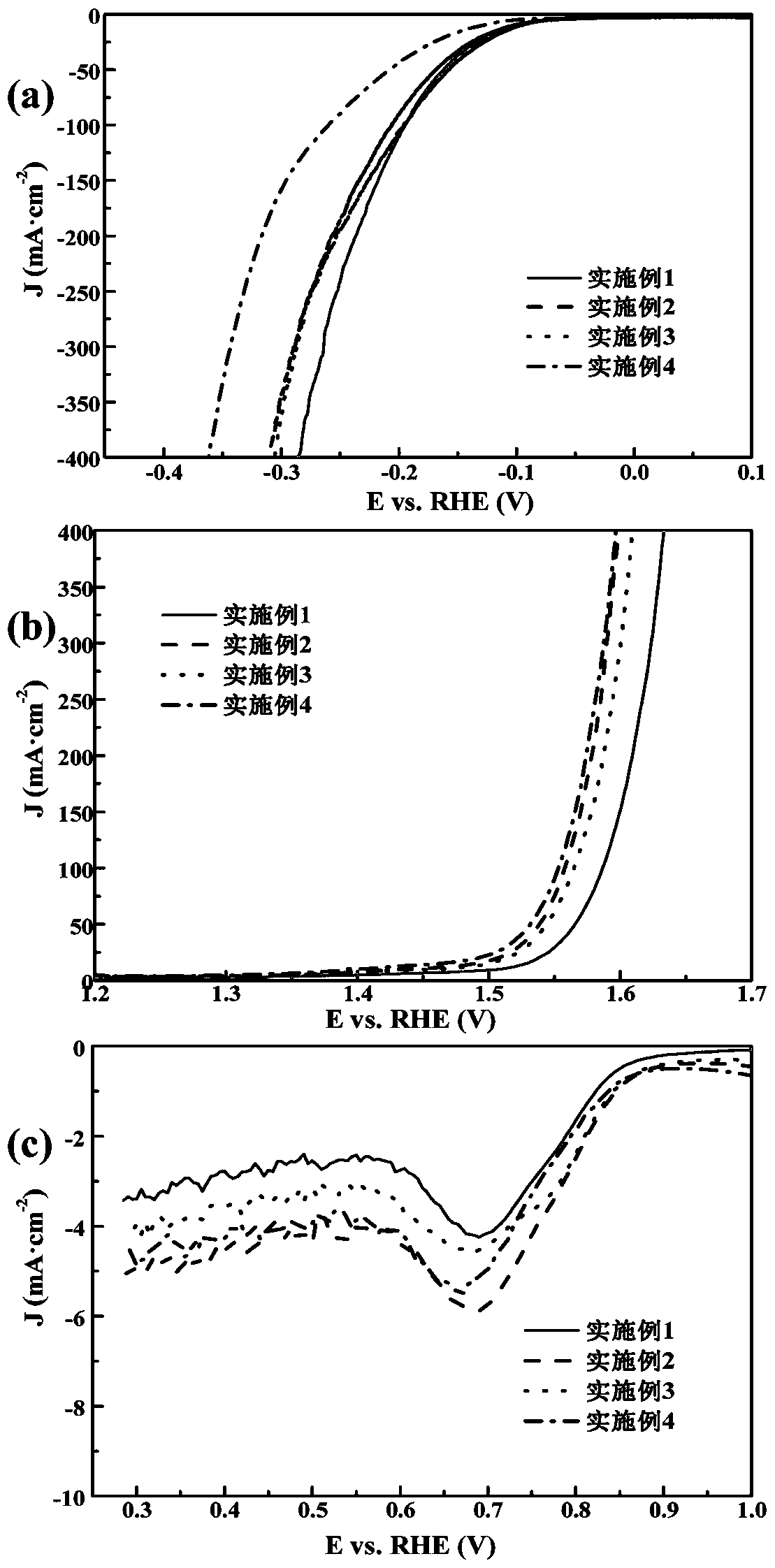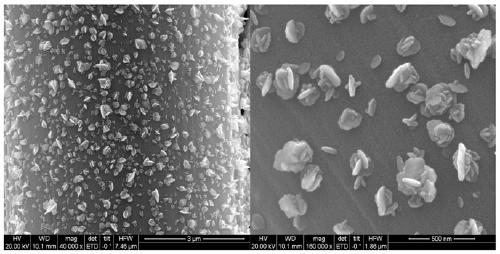Preparation method of molybdenum disulfide-cobalt sulfide-carbon ternary composite in-situ electrode
A molybdenum disulfide, in-situ electrode technology, applied in the direction of electrodes, battery electrodes, electrode shapes/types, etc., can solve the problems of expensive noble metal materials, lack of long-term operation stability, fuel oxidation molecular immunity, etc.
- Summary
- Abstract
- Description
- Claims
- Application Information
AI Technical Summary
Problems solved by technology
Method used
Image
Examples
Embodiment 1
[0019] Dissolve molybdenum pentachloride, cobalt chloride hexahydrate, Tx-100 and thiourea in 2.7 mL N,N-dimethylformamide solution at room temperature, the total amount of molybdenum pentachloride and cobalt chloride hexahydrate The concentration is 400mM, the concentration ratio of the two substances is 1:1, the amount of Tx-100 is 0.3mL, and the concentration of thiourea is 1000mM. Soak the carbon paper in the precursor solution for 30 minutes, take it out, dry it on a hot table at 80°C for 10 minutes, then apply the precursor solution evenly on the carbon paper, and then continue to dry for 30 minutes. Put the coated carbon paper into a tube furnace, react at 600 °C for 1 h under Ar atmosphere, and take it out after natural cooling.
Embodiment 2
[0021] Dissolve molybdenum pentachloride, cobalt chloride hexahydrate, Tx-100 and thiourea in 2.7 mL N,N-dimethylformamide solution at room temperature, the total amount of molybdenum pentachloride and cobalt chloride hexahydrate The concentration is 400mM, the concentration ratio of the two substances is 1:3, the amount of Tx-100 is 0.3mL, and the concentration of thiourea is 1000mM. Soak the carbon paper in the precursor solution for 30 minutes, take it out, dry it on a hot table at 80°C for 10 minutes, then apply the precursor solution evenly on the carbon paper, and then continue to dry for 30 minutes. The coated carbon paper was placed in a tube furnace, reacted at 600 °C for 1 h under Ar flow, and was taken out after naturally cooling to room temperature.
[0022] figure 1 For the prepared molybdenum disulfide-cobalt sulfide-carbon in situ electrode of embodiment 2 at 50mA / cm 2 Stability test graph performed under constant current. As can be seen from the figure, the ...
Embodiment 3
[0024] Dissolve molybdenum pentachloride, cobalt chloride hexahydrate, Tx-100 and thiourea in 2.7 mL N,N-dimethylformamide solution at room temperature, the total amount of molybdenum pentachloride and cobalt chloride hexahydrate The concentration is 400mM, the concentration ratio of the two substances is 1:3, the amount of Tx-100 is 0.3mL, and the concentration of thiourea is 1000mM. Soak the carbon paper in the precursor solution for 30 minutes, take it out, dry it on a hot table at 80°C for 10 minutes, then apply the precursor solution evenly on the carbon paper, and then continue to dry for 30 minutes. The coated carbon paper was placed in a tube furnace, reacted at 600 °C for 1 h under Ar flow, and was taken out after naturally cooling to room temperature. Continue to react the carbon paper taken out at 400°C in the air for 30 minutes, and then take it out after naturally cooling to room temperature.
PUM
| Property | Measurement | Unit |
|---|---|---|
| Limiting current density | aaaaa | aaaaa |
Abstract
Description
Claims
Application Information
 Login to View More
Login to View More - R&D
- Intellectual Property
- Life Sciences
- Materials
- Tech Scout
- Unparalleled Data Quality
- Higher Quality Content
- 60% Fewer Hallucinations
Browse by: Latest US Patents, China's latest patents, Technical Efficacy Thesaurus, Application Domain, Technology Topic, Popular Technical Reports.
© 2025 PatSnap. All rights reserved.Legal|Privacy policy|Modern Slavery Act Transparency Statement|Sitemap|About US| Contact US: help@patsnap.com



